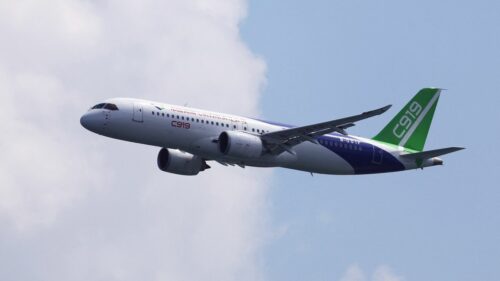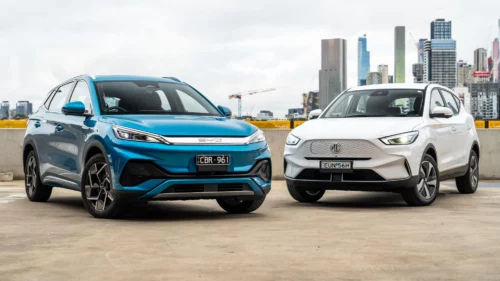

In recent years, Chinese automotive manufacturers have achieved notable success in the Australian car market by strategically focusing on underserved segments and leveraging their competitive advantages. Brands such as MG, GWM, LDV, and BYD have made significant inroads by catering to practical and budget-conscious consumers through well-targeted vehicle offerings. This approach has not only enabled them to capture substantial market shares in specific categories—such as affordable light cars and small SUVs—but has also demonstrated a model that could be applied to other industries facing similar market dynamics. For instance, the commercial aircraft industry, where the Chinese manufacturer COMAC is making its debut, could benefit from adopting a comparable niche-targeting strategy. However, while the Chinese automotive sector’s success provides valuable insights, COMAC’s journey underscores the broader challenges posed by geopolitical and economic factors that influence global market penetration.

Source: https://edition.cnn.com/2024/02/19/business/china-comac-c919-international-debut-intl-hnk/index.html
Chinese car manufacturers have successfully entered and thrived in the competitive Australian car market by strategically targeting underserved market niches, particularly within the affordable and practical vehicle segments. Brands like MG, GWM, LDV, and BYD have concentrated their efforts on categories where they can offer value-driven propositions, such as light cars under $30,000, small SUVs under $45,000, and large vans. For example, in 2023, the MG 3 dominated the light cars category under $30,000, with sales surpassing their closest competitor by 123%. Similarly, in the small SUV segment, two of the top three brands were Chinese, collectively selling 209% more cars than the leading non-Chinese manufacturer.

This focused strategy enables Chinese manufacturers to leverage cost advantages and offer reliable vehicles at competitive prices, making them appealing to budget-conscious consumers. According to Domarchi et al. (2008), car purchases are influenced by complex socioeconomic and psychosocial factors, which Chinese manufacturers have adeptly tapped into, leading to an increase of 61,772 cars sold in 2023 compared to 2021. The consistency in dominating these specific categories over several years suggests that these brands have effectively identified and capitalised on market gaps that established manufacturers have not fully addressed.
Moreover, the significant year-on-year sales growth for brands like BYD, which experienced a staggering 489% increase in 2023, underscores the effectiveness of this niche-targeting approach. This success provides a valuable lesson for other industries, such as aviation, where new entrants like COMAC could adopt a similar strategy. As Szepan (2012) observed, the C919 was designed to challenge the Airbus A320 and Boeing B737 duopoly in the largest global market segment. By defining and dominating a specific market niche—whether through pricing, reliability, or a combination of both—new players can carve out a significant presence even in highly competitive markets. This approach allows them to bypass the fierce competition in saturated segments and establish a strong foothold by addressing the needs of an underserved customer base.
However, COMAC’s success on the world stage will depend not only on its strategic approach but also on broader geopolitical and economic factors. The aircraft industry is characterised by high research and production costs and a relatively small market, making strong state support crucial for success (Francis & Pevzner, 2006). COMAC benefits from being a state-owned enterprise with the backing of the Chinese government (Uhalley, 2018), but this support may not be enough to overcome the political and strategic challenges it faces.
Commercial aircraft orders often serve as political tools, with governments using their influence to drive sales. European governments, for instance, have used their global sway to boost Airbus sales (Center for Security Policy, 2010), while China has purchased Airbus aircraft in response to increased US tensions (Lee, 1997). COMAC’s relative lack of global influence may present a significant challenge.
Drawing parallels with the defence industry, which also faces a highly politicised acquisition process, further illuminates the obstacles for COMAC. Although China is the world’s second-largest weapons manufacturer (Tian & Su, 2020), it ranks fifth in weapon exports, with its market primarily in developing countries due to lower prices and fewer political restrictions (Cordesman et al., 2019; Raska & Bitzinger, 2020). Major markets like Australia remain largely inaccessible due to political reasons (Cordesman et al., 2019).

Source: https://www.economist.com/china/2023/06/08/the-end-of-western-naivety-about-china
The interconnection between the civil and defence aircraft industries adds another layer of complexity. Military technologies often spill over into civilian applications, and civilian fleets sometimes serve as military reserves (Olienyk & Carbaugh, 1999; Jönsson, 1981). Consequently, like Chinese weapons manufacturers, COMAC may struggle to gain significant market share in major Western or Western-aligned aircraft markets, which make up a substantial portion of the total market (Commercial Market Outlook, 2024).
The impressive growth of Chinese car manufacturers in Australia highlights a strategic approach that leverages cost efficiencies and targeted market segments to establish a competitive edge. This model, evidenced by significant sales increases and market dominance in specific vehicle categories, offers a valuable lesson for other industries, including commercial aviation. COMAC’s efforts to enter the global aircraft market exemplify the potential for success through niche targeting, yet also reveal the complexities of navigating geopolitical and strategic challenges. The interplay between state support and international political dynamics will be crucial in determining COMAC’s ability to compete on the world stage. Similarly, just as Chinese automotive brands have shown resilience and innovation, COMAC’s potential success will hinge on balancing competitive strategies with the broader geopolitical landscape.
References:
Domarchi, C., Tudela, A., & Gonzalez, A. (2008). Effect of attitudes, habit and affective appraisal on mode choice: An application to university workers. Transportation, 35(6), 585–599. https://doi.org/10.1007/s11116-008-9181-0
Francis, J. G., & Pevzner, A. F. (2006). Airbus and Boeing: Strengths and limitations of strong states. Political Science Quarterly, 121(4), 629–651. https://doi.org/10.2307/20202765
Jönsson, C. (1981). Sphere of flying: The politics of international aviation. International Organization, 35(2), 273–302. https://doi.org/10.1017/S0020818300015348
Lee, W. (1997). A Mandarin at the gate: The political economy of China’s commercial aircraft industry. Asian Perspective, 21(2), 179–221. https://doi.org/10.1353/apr.1997.0015
Olienyk, J., & Carbaugh, R. (1999). Competition in the world jetliner industry. Challenge, 42(4), 60–81. https://doi.org/10.1080/05775199.1999.11471945
Raska, M., & Bitzinger, R. A. (2020). Strategic contours of China’s arms transfers. Strategic Studies Quarterly, 14(1), 91–116. https://doi.org/10.55540/SSQ.14.1.91
Szepan, M. (2012). Changing the rules of the game: The commercial aircraft industry in China. Harvard Asia Quarterly, 14(1–2), 112–122. https://doi.org/10.2307/41786658
Uhalley, S. (2018). China’s aerospace prowess today and tomorrow. American Journal of Chinese Studies, 25(1), 63–79. https://doi.org/10.2307/26598697
Center for Security Policy. (2010). EADS/Airbus government ownership, protection, intervention & subsidies (pp. 9–24). Center for Security Policy. https://www.jstor.org/stable/resrep05071.5
Cordesman, A. H., Burke, A. A., & Molot, M. (2019). China’s shifting balance of arms imports and exports. In China and the U.S.: Cooperation, competition and/or conflict (pp. 235–253). Center for Strategic and International Studies. https://www.jstor.org/stable/resrep22586.23
Hulst, D. (2024, July). Commercial market outlook. Boeing. https://www.boeing.com/content/dam/boeing/boeingdotcom/market/assets/downloads/2024-cmo-executive-presentation.pdf
Tian, N., & Su, F. (2020). Estimating the arms sales of Chinese companies. Stockholm International Peace Research Institute. https://www.jstor.org/stable/resrep24475
The CAINZ Digest is published by CAINZ, a student society affiliated with the Faculty of Business at the University of Melbourne. Opinions published are not necessarily those of the publishers, printers or editors. CAINZ and the University of Melbourne do not accept any responsibility for the accuracy of information contained in the publication.